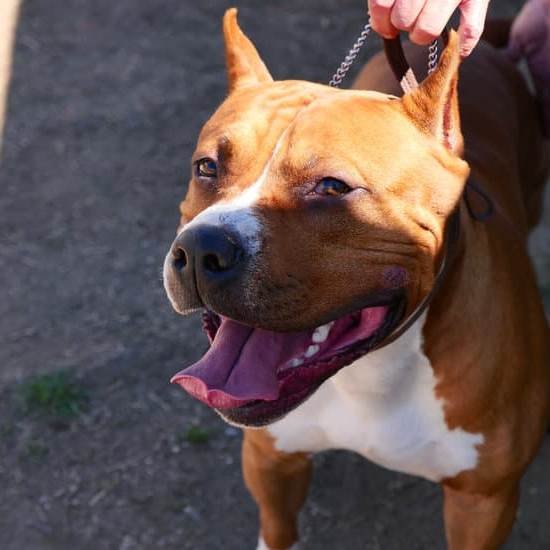It can be quite frustrating and disruptive when your dog barks incessantly while you’re away. However, understanding why dogs bark when they’re alone is an essential first step towards successfully training them to stop. Dogs are pack animals by nature, and being left alone for extended periods can trigger anxiety and distress which leads to excessive barking.
In this article, we will explore effective training methods to help curb your dog’s barking when they are left alone. Establishing a routine for your dog is one of the fundamental aspects of training. Dogs thrive on consistency, so creating a schedule that includes regular feeding times, exercise, and potty breaks can help reduce their anxiety and provide a sense of security.
Additionally, providing a comfortable and secure environment for your dog plays a crucial role in tackling their barking habits. Ensuring they have access to cozy bedding, appropriate temperature control, and sufficient water supply can help alleviate stress. Creating designated spaces or using crate training techniques can also make them feel safe when left alone.
As we delve deeper into the training process, we will discuss the implementation of positive reinforcement techniques such as rewards and praise to discourage barking behavior. Gradually desensitizing your dog to being alone through counter-conditioning exercises will also be explored in detail. Moreover, we will discuss the use of interactive toys and puzzles that keep your furry friend mentally stimulated and occupied during their downtime.
While these techniques prove successful for most dogs, there may be instances where professional help is required if your dog’s barking persists. We will offer guidance on when it might be necessary to seek professional assistance from a trainer or behaviorist who specializes in separation anxiety.
Finally, we will address common challenges and debunk misconceptions associated with training a dog not to bark when alone. By acknowledging these hurdles in advance, you will be better equipped to navigate through the training process smoothly.
Through understanding the underlying reasons behind your dog’s barking, implementing consistent routines, and providing a secure environment, you can successfully train your furry companion to remain calm and silent when left alone.
The importance of establishing a routine for your dog
Establishing a routine for your dog is crucial when it comes to training them not to bark when they are alone. Dogs thrive on structure and consistency, and having a set routine can help alleviate their anxiety and reduce the likelihood of excessive barking.
One important aspect of establishing a routine is creating regular feeding and walking schedules for your dog. By feeding your dog at the same time every day, they will come to expect and anticipate their meals, reducing any unnecessary stress or anxiety that could lead to barking. Similarly, ensuring that your dog gets enough exercise through daily walks or play sessions can tire them out mentally and physically, making them less likely to bark out of boredom or frustration.
In addition to regular feeding and exercise, it’s also important to establish a consistent bedtime routine for your dog. Having a set routine before bedtime can help signal to your dog that it’s time to relax and wind down.
This could include activities such as dimming the lights, providing a comfortable sleeping area, or engaging in a calming activity like reading or gentle massage. By creating a calm and predictable environment before sleep, you can help prevent any restlessness or barking during the night.
Overall, establishing a routine for your dog is an essential part of training them not to bark when they are alone. By providing structure and consistency in their daily lives, you can help alleviate their anxiety and create a more secure environment for them. This will ultimately contribute to reducing their urge to bark excessively when left alone.
| Benefits of Establishing a Routine | Examples |
|---|---|
| Reduces anxiety | Feeding at the same time each day |
| Prevents boredom | Daily walks or play sessions |
| Promotes relaxation | Consistent bedtime routine |
Creating a comfortable and secure environment for your dog
Designating a specific area
To create a sense of security for your dog, designate a specific area in your home where they will feel comfortable when left alone. This can be a crate, a gated-off section of a room, or even an entire room.
Make sure this space is adequately sized for your dog and includes their bed or blanket, water bowl, and some toys to keep them occupied. By establishing this designated area, you are providing your dog with their own sanctuary that they associate with positive experiences.
Providing soothing stimuli
To help ease feelings of anxiety or fear when your dog is alone, provide soothing stimuli in their environment. This can include playing soft background music or leaving the TV on at low volume to mimic human presence and drown out any potential triggering noises from outside. You may also consider using pheromone diffusers or sprays specifically designed to calm dogs.
Ensuring physical comfort
Prioritize ensuring that your dog is physically comfortable while being alone. Make sure the temperature in their designated area is appropriate for their breed and provide accessible fresh water throughout the day. Additionally, consider investing in comfortable bedding that supports their joints and provides them with a cozy spot to rest.
By creating a comfortable and secure environment for your dog, you are helping to minimize any potential triggers that may lead to excessive barking when they are left alone. Coupled with other training techniques such as positive reinforcement and counter-conditioning (as discussed in other sections), this will aid in successfully teaching your furry friend not to bark unnecessarily when left by themselves.
Implementing positive reinforcement techniques to discourage barking
Implementing positive reinforcement techniques is a crucial aspect of training a dog not to bark when they’re alone. Positive reinforcement involves rewarding your dog for desired behaviors, in this case, remaining calm and quiet when left alone. By using positive reinforcement, you can effectively discourage barking and encourage a more desirable behavior from your dog.
One effective technique is to reward your dog with treats or praise when they remain calm and do not bark while alone. This helps create an association between silence and positive rewards in your dog’s mind. Be sure to give the treats or praise immediately after your dog stops barking so they can make the connection between their behavior and the reward.
Another technique is to utilize distraction methods when you leave your dog alone. Provide them with interactive toys or puzzles that can engage their attention and keep them occupied. This will help redirect their focus away from barking and onto stimulating activities instead.
In addition, it’s important to avoid punishing your dog for barking when they are alone. Negative punishment techniques such as yelling or scolding may only increase anxiety and stress in your dog, possibly leading to more excessive barking. It’s essential to create a positive environment where your dog feels safe and secure, helping them associate being alone with positive experiences rather than fear or anxiety.
Positive reinforcement techniques take time and consistency but can be highly effective in teaching your dog not to bark when they’re alone. By reinforcing calm behavior with rewards, providing distractions, and creating a positive environment, you can gradually shape your dog’s behavior towards remaining quiet during periods of solitude.
– Consider keeping the following points in an unordered list:
- Use treats or praise as immediate rewards when your dog remains calm without barking while alone.
- Provide interactive toys or puzzles that engage your dog’s attention while you’re away.
- Avoid punishing or scolding your dog for barking when alone as it may create negative associations and worsen the problem.
- Consistency and patience are key in implementing positive reinforcement techniques to discourage barking when alone.
Gradually desensitizing your dog to being alone through counter-conditioning
Counter-conditioning is a technique that can be highly effective in gradually desensitizing your dog to being alone and reducing excessive barking. The goal of counter-conditioning is to change your dog’s emotional response to being alone, from anxiety and distress to a sense of relaxation and comfort.
To start with counter-conditioning, it is recommended to begin with short periods of separation. You can start by leaving the room for just a few seconds, then returning before your dog becomes anxious or starts barking. Repeat this exercise multiple times throughout the day, gradually increasing the duration of your absence each time. This process helps your dog build positive associations with you leaving and coming back.
During these short periods of separation, it is important to create an environment that helps your dog feel calm and secure. Provide them with their favorite toys or treats as distractions and make sure they have access to a comfortable space such as a cozy bed or den-like area. Additionally, playing soothing music or leaving the television on at a low volume can help mask any external noises that might trigger barking.
Reward-based training techniques are crucial when implementing counter-conditioning. Whenever you leave the room and your dog remains quiet, remember to reward them with praise, treats, or their favorite toy. This positive reinforcement reinforces the idea that being alone is not something negative but rather something enjoyable that leads to rewards.
It is important to note that counter-conditioning takes time and patience. It may take several weeks or even months for your dog to become fully comfortable with being alone without excessive barking. It is also advisable to seek professional help from a certified dog trainer or behaviorist who specializes in separation anxiety if you encounter any challenges along the way.
| Techniques | Tips |
|---|---|
| Start with short periods of separation | Make it a positive experience with treats and praise |
| Create a calm and secure environment | Provide toys, a comfortable space, and soothing music |
| Reward-based training | Use praise, treats, or favorite toys to reinforce positive behavior |
| Be patient and seek professional help if needed | Counter-conditioning takes time; consult a dog trainer or behaviorist if necessary |
Using interactive toys and puzzles to keep your dog mentally stimulated and occupied
Interactive toys and puzzles can be extremely helpful in keeping your dog mentally stimulated and occupied, which can aid in preventing excessive barking when they’re alone. Dogs are naturally curious and intelligent creatures, and providing them with interactive toys and puzzles can keep their minds engaged and prevent them from getting bored or anxious.
Benefits of interactive toys
Using interactive toys has several benefits for both your dog’s mental health and behavior. Firstly, these toys serve as a source of mental stimulation. By engaging their problem-solving skills, these toys work to tire out your dog mentally, resulting in a calmer and more contented dog when they’re alone.
Additionally, interactive toys help redirect your dog’s attention away from any potential triggers that may provoke barking. When dogs have something fun and challenging to focus on, they are less likely to become fixated on outside noises or anxieties that could trigger their barking behavior.
Choosing the right interactive toy
When selecting interactive toys for your dog, it’s important to consider their size, breed characteristics, and individual preferences. Puzzle toys that require your dog to manipulate various components or solve problems are excellent options. Treat-dispensing toys are also a great choice as they keep dogs motivated through the reward of tasty treats.
Be sure to choose high-quality products that are durable enough to withstand rough play. It’s also a good idea to rotate different toys regularly. This way, your dog won’t get bored with the same toy over time. Introducing new puzzles will provide fresh mental challenges for your pup.
Setting up an activity schedule
In order for interactive toys to effectively keep your dog engaged while you’re away, it’s crucial to establish an activity schedule that includes designated playtime with these toys. Ensure you include sufficient time each day specifically dedicated to playing with these stimulating tools before leaving your dog alone.
By incorporating interactive toys into your dog’s routine, they will associate these toys with having fun and getting mental stimulation. This positive association can help reduce any anxiety or boredom your dog may experience while alone, ultimately decreasing their need to bark excessively.
Remember, providing mental stimulation is just one aspect of training your dog not to bark when alone. It’s important to combine the use of these toys with other techniques such as positive reinforcement and gradual desensitization for best results.
Seeking professional help if your dog’s barking persists
If you have tried various techniques and strategies to train your dog not to bark when alone, but the problem persists, it may be time to consider seeking professional help. Sometimes, despite our best efforts, certain behavioral issues require the expertise of a trained professional who specializes in dog training and behavior modification.
There are several reasons why seeking professional help can be beneficial in this situation. First and foremost, a professional will have a deep understanding of canine behavior and will be able to assess your specific situation objectively. They can identify any underlying causes or triggers for your dog’s barking and develop a customized training plan tailored to your dog’s needs.
When searching for a professional trainer or behaviorist, it is important to do thorough research to ensure that you are choosing someone who has the necessary experience and qualifications. Look for trainers who are certified by reputable organizations such as the Certification Council for Professional Dog Trainers (CCPDT) or the International Association of Animal Behavior Consultants (IAABC). Reading reviews and talking to other dog owners who have sought professional help can also provide valuable insights.
During your initial consultation with a professional, they will likely conduct an assessment of your dog’s behavior to gain a better understanding of their barking patterns when alone. They may ask questions about your dog’s history, daily routine, and any previous training they have received. Based on their observations and evaluation, they will develop a comprehensive plan that may include exercises, techniques, and management strategies specifically tailored to address your dog’s barking issue.
Remember that seeking professional help does not mean you have failed as a dog owner or trainer. It simply means that you are taking proactive steps towards solving the problem in the best way possible for both you and your furry companion. With the guidance and support from a qualified professional, you can increase the likelihood of successfully training your dog not to bark when they are alone.
Troubleshooting common challenges and misconceptions about training a dog not to bark when alone
Training a dog not to bark when they are alone can be a challenge, but with consistency and patience, it is possible to achieve success. However, there may be some common challenges and misconceptions that you could encounter along the way.
One common challenge is that some dog owners may expect their furry friends to stop barking altogether. While excessive barking can certainly be discouraged, it is important to remember that barking is a natural way for dogs to communicate. Instead of focusing on completely eliminating the barking behavior, aim for teaching your dog when it is appropriate to bark and when it is not.
Another misconception may arise from misunderstandings about the underlying causes of the barking behavior. Sometimes, dogs bark because they are anxious or fearful when left alone. If you notice that your dog’s barking persists despite your efforts to train them, seeking professional help from a veterinarian or an animal behaviorist can be extremely beneficial. They will be able to assess the situation more closely and provide personalized guidance based on your dog’s specific needs.
In conclusion, training a dog not to bark when they are alone requires understanding, consistency, and patience. It is essential to establish routines, create a comfortable environment, use positive reinforcement techniques, gradually desensitize your dog through counter-conditioning methods, provide mental stimulation through interactive toys and puzzles, and seek professional help if needed.
By troubleshooting common challenges and dispelling misconceptions along the way, you will be on the path towards helping your furry friend become more relaxed and quiet when left alone.
Frequently Asked Questions
Why will my dog not stop barking when alone?
Dogs may continue barking when left alone for various reasons, such as separation anxiety, boredom, or a lack of proper training. Separation anxiety is a common cause and occurs when dogs become distressed or anxious about being separated from their owners. They may bark excessively due to this anxiety as a way to express their distress.
Boredom can also lead to excessive barking as dogs seek stimulation or attention. Lack of training in properly addressing and redirecting their behavior can contribute to the problem. Understanding the underlying cause and working on techniques like desensitization, positive reinforcement, and providing mental stimulation can help address this issue.
Can a dog be trained never to bark?
While it is unrealistic to expect a dog never to bark, it is possible to train them to bark less frequently and only in appropriate situations. Barking is a natural form of communication for dogs; it helps them convey different messages and express their needs or emotions. However, excessive barking can be problematic.
By using positive reinforcement techniques, consistent training methods, and teaching the “quiet” command, you can help your dog understand when barking is acceptable and when it should stop. Patience, consistency, and understanding your dog’s individual temperament are crucial in achieving successful bark control training.
How do I stop barking anxiety?
To address barking anxiety in dogs, it is important to identify the root cause and implement appropriate strategies accordingly. Gradual desensitization and counter-conditioning techniques can be effective in reducing anxiety-related barking behaviors. This involves exposing the dog gradually to triggers that cause anxiety while pairing them with positive experiences (such as treats or playtime) to change the emotional response over time.
Providing a safe space or crate where the dog feels secure can also alleviate anxiety. Additionally, engaging in regular exercise routines, mental stimulation activities (e.g., puzzle toys), and ensuring they receive enough social interaction can help reduce overall anxiety levels and prevent excessive barking associated with anxiety. In some cases, consulting with a professional dog trainer or veterinarian may be necessary to develop a customized plan for managing barking anxiety.

Welcome to the blog! I am a professional dog trainer and have been working with dogs for many years. In this blog, I will be discussing various topics related to dog training, including tips, tricks, and advice. I hope you find this information helpful and informative. Thanks for reading!





